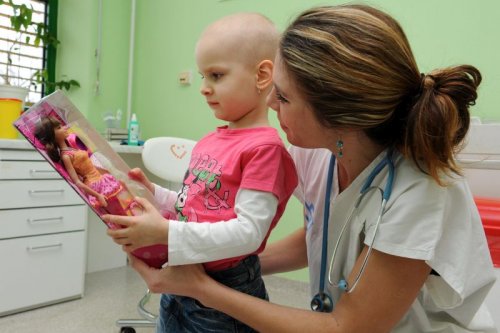Tracking
 After treatment, the patient must be monitored for a long time. We will check its overall condition and the function of individual bodies. The patient will be invited to our outpatient clinic for regular check-ups. In the first months after the end of treatment more often, then once every six months to a year.
After treatment, the patient must be monitored for a long time. We will check its overall condition and the function of individual bodies. The patient will be invited to our outpatient clinic for regular check-ups. In the first months after the end of treatment more often, then once every six months to a year.
What is the termination of cancer treatment?
The date of termination of anticancer treatment varies according to the diagnosis and the extent of the child's illness. In some cases, it is a term of surgery in which the disease has been removed and no further therapy is necessary. In other children, the end of treatment means the date of the last fraction of radiation or the last day of chemotherapy.
What is a general post-treatment examination?
We call a general examination a series of examinations that follow the end of treatment, usually at intervals of 4-6 weeks. Individual examinations depend on the basic diagnosis and the original extent of the disease. These are usually imaging examinations (X-ray, MR, CT, ultrasound), blood and bone marrow examinations. Through a general examination, we determine whether the patient is without signs of oncological disease or in so-called complete remission (CR). If the treatment is terminated and the patient still has signs of the disease (eg during imaging examinations), we speak of so-called partial remission (PR).
What is dispensary?
After the end of oncological treatment, long-term follow-up, so-called dispensarization, follows. Dispensary care takes place at the appropriate level ambulance our clinic. In the first year after the end of treatment, outpatient check-ups are frequent, after which the intervals of individual examinations are extended. The dispensary care includes monitoring the patient's growth and well-being, blood tests and a number of other examinations, about which you will always be informed in advance. Most patients are monitored on an outpatient basis. In young children, examinations under general anesthesia are sometimes necessary during brief hospitalizations.
How often do check-ups take place after the end of cancer treatment?
The follow-up schedule varies according to the basic diagnosis. In the first year, the patient will be invited to our clinic relatively often after the end of treatment, usually every 6-8 weeks, resp. every 3 months. After a year of monitoring, the monitoring intervals are extended, you will visit the outpatient clinic every 4-6 months, later every six months to a year.
When will he remove our catheter?
The removal of the central venous catheter / port will take place at an interval after the end of the oncological treatment and after the overall examination. The catheter is usually removed 4-6 weeks after the end of therapy. We usually leave the port to patients 4-6 months after treatment. In transplant patients, we usually leave the catheter for 4-6 months after the transplant, in young children even longer.
When will the monitoring end?
At our clinic, we monitor patients for several decades after treatment, and patients after bone marrow transplantation for life. In the long run, outpatient check-ups are once a year, resp. in two years. Long-term dispensary allows you to monitor any late consequences treatment. Long-term treatment can help detect early recurrence of the disease or the development of secondary cancer, which may occur in some patients.

